![]()
![]()
![]()
Use LEFT and RIGHT arrow keys to navigate between flashcards;
Use UP and DOWN arrow keys to flip the card;
H to show hint;
A reads text to speech;
68 Cards in this Set
- Front
- Back
|
Absolute Monarch |
Person (monarch) that wields unrestricted power over the sovereign state and its people. |
|
|
Aria |
A long, accompanied song for a solo voice, typically one in an opera or oratorio. |
|
|
Bach |
German composer and musician of the Baroque period. He enriched German styles through counterpoint, harmonic, and motivic organization. |
|
|
Ballet |
Artistic dance form performed to music using precise and highly formalized set steps and gestures. Dancers are accompanied by music and they tell a story with their movements. |
|
|
Baroque |
Relating to the sttle of European architecture, music, and art of the 17th and 18th centuries that followed mannerism and is characterized by ornate detail. Examples are art by Bernini, Rubens, and Caravaggio (first) and music by Vivaldi, Bach, and Handel. |
|
|
Basso Continuo |
An accompanying part that includes a bass line and harmonies, typically played on a keyboard instrument and with other instruments such as a cello or bass violin. |
|
|
Gian Lorenzo Bernini |
Italian sculptor and architect. Credited with creating the Baroque style of sculpture. |
|
|
Gian Lorenzo Bernini |
Italian sculptor and architect. Credited with creatingbthe Baroque style of sculpture. |
|
|
Cadenza |
A virtuoso solo passage inserted into a movement in a concerto or other work, typically near the end. |
|
|
Camera obscura |
A darkened box with a convex lens or aperture for projecting the image of an external object onto a screen inside. It is historically important to the development of photography. |
|
|
Cantata |
A medium-length narrative piece of music for voices with instrumental accompaniment, typically with solos, chorus, and orchestra. |
|
|
Caravaggio |
Italian painter. Influential figure in the transition from late mannerism to baroque. Made use of naturalistic realism and dramatic light and shade. |
|
|
Chiaroscuro |
In drawing/panting, an effect of contrasted light and shadow created by light falling unevenly or from a particular direction or something. |
|
|
Chorale |
A musical composition consisting of or resembling a harmonized version of a simple, stately hymn tune. |
|
|
Concerto |
A musical composition for a solo instrument/ instruments accompanied by an orchestra, especially one of a large scale. |
|
|
Counter-Reformation |
The period of Catholic resurgence beginning with the Council of Trent and ending with the end of the Thirty Years' War. Initiated in response to the Protestant Reformation. |
|
|
Descartes |
French philosopher and mathematician. Introduced coordinates. Dualistic theory of mind and matter. |
|
|
Divine Right |
The doctrine that kings and queens have a God-given right to rule and rebellion against them is sin. |
|
|
Fugue |
Polyphonic. Contrapuntal composition in which a short melody or phrase is introduced by one part and successively taken up by others and developed by interweaving the parts. |
|
|
Galileo |
Italian astronomer, physicist, and mathematician and philosopher that played a manor role in the scientific revolution during the Renaissance. First to use a telescope to study the stars. |
|
|
Artemisia Gentileschi |
Italian Baroque painter. Judith slaying holofernes. |
|
|
Frans Hals |
Dutch Golden Age painter who lived and worked in Haarlem. Notable for his loose painterly brushwork. The Laughing Cavalier. |
|
|
Handel |
German composer well known for his operas, oratorios, anthems, and organ concertos. The Messiah. |
|
|
Harpsichord |
A musical instrument played by means of a keyboard. It produces sound by plucking a string when they key is pressed. |
|
|
Kepler |
German mathematician, astronomer, and astrologer. Known for his Laws of Planetary Motion. |
|
|
L'état, c'est moi |
Louis XIV called himself the Sun King. "I am the State." |
|
|
Libretto |
The text of an opera or other long vocal work. |
|
|
Locke |
English philosopher and physician regarded as one of the most influential Enlightment thinkers. Claimed that the mind is a tabula rasa (blank state) until experience begins to write on it. |
|
|
Louis XIV |
Known as Louis The Great, was a monarch of the house of Bourbon who ruled as king of France from 1643 until his death. |
|
|
John Milton |
English poet. Paradise Lost (book name) |
|
|
Moliere |
Jean-Baptist Poquelin, french playwrite and actor who is considered to be one of the greatest masters of comedy in western literature. |
|
|
Monteverdi |
Italian composer, singer, and Roman Catholic priest. Revolutionary. Marked the change from the Renaissance style of music to that of the Baroque period. |
|
|
Opera |
A dramatic work in one or more acts, set to music for singers and instrumentalists. |
|
|
Oratorio |
A large-scale musical work for orchestra and voices, typically a narrative on a religious theme performed without the use of costumes, scenery, or action. |
|
|
Organ |
A keyboard instrument of one or more divisions, each played with its own keyboard, played either with the hands or the feet. |
|
|
Pilaster |
A rectangular column, especially one projecting from a wall. |
|
|
Program Music |
Music that is intended to evoke images or convey the impression of events. |
|
|
Recitative |
Musical declamation of the kind usual in the narrative and dialogue parts of opera and oratorio, sung in the rhythm of ordinary speech with many words on the same note. |
|
|
Rembrandt |
A Dutch painter and etcher. Considered one of the greatest painters and printmakers in European art and the most important in Dutch history. |
|
|
Rococo |
A style of art, especially architecture and decorative art, that originated in the Baroque period, and is marked by a lot of ornaments. |
|
|
Rubens |
Flemish Baroque painter. A master of the baroque, he executed many portraits and exuberant works of allegorical, historical, and religious themes, including Descent from the Cross. |
|
|
Satire |
The use of humor, irony, exaggeration, or ridicule to expose and criticize people's stupidity or vices, particularly in the context of contemporary politics and other tropical issues. |
|
|
Stile Rappresentativo |
A style of singing that is more expressive than speech, but is not as melodious as song. |
|
|
Suite |
A set of instrumental compositions, originally dance style, to be played in succession. |
|
|
Toccata |
A musical composition for a keyboard instrument designated to exhibit the performer's touch and technique. |
|
|
Velazquez |
A Spanish painter who was the leading artist in the court of King Phillip IV and one of the most important painters of the Spanish Golden Age. |
|
|
Vermeer |
A Dutch painter who specialized in domestic interior scenes of middle-class life. |
|
|
Versailles |
A royal château in Versailles in the France. |
|
|
Virtuoso |
A person highly skilled in music or another artistic pursuit. |
|
|
Vivaldi |
An Italian Baroque composer. The Four Seasons (book name). |
|
|
Word painting |
The musical technique of writing music that reflects the literal meaning of a song. |
|
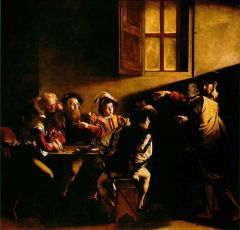
|
Calling of St Matthew Painting Caravaggio |
|
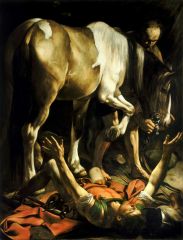
|
Conversion of St Paul Painting Caravaggio |
|
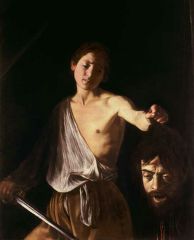
|
David Painting Caravaggio |
|
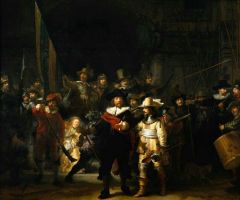
|
Night Watch Painting Rembrandt |
|
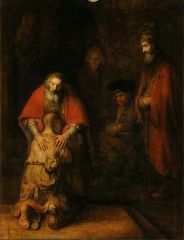
|
Return of the Prodigal Son Painting Rembrandt |
|
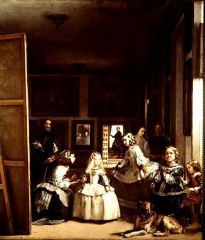
|
The Maids of Honor Painting Velasquez |
|
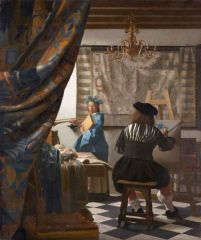
|
The Artist in His Studio Painting Vermeer |
|
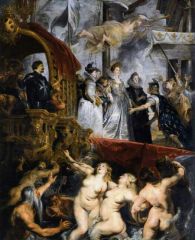
|
The Arrival of Maria de Medici Painting Rubens |
|
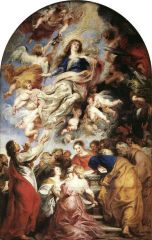
|
The Assumption of the Virgin Painting Rubens |
|

|
Judith and Holofernes Painting Gentileschi |
|
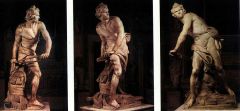
|
David Sculpture Bernini |
|
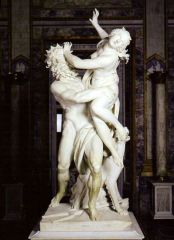
|
Pluto and Persephone Sculpture Bernini |
|
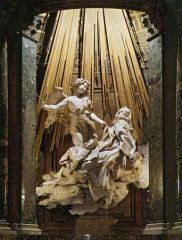
|
Ecstasy of St. Theresa Sculpture Bernini |
|
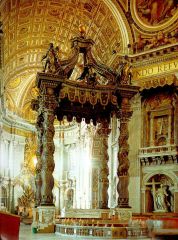
|
Baldacchino of St. Peter's Sculpture Bernini |
|

|
I1 Gesu-The Allegory of the Missionary Work of the Jesuits Fresco |
|
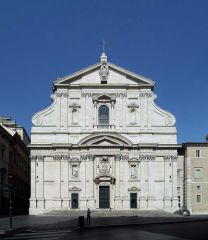
|
I1 Gesu Architecture |
|
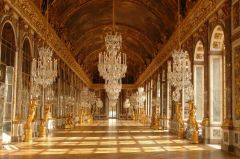
|
Versailles (Hall of Mirrors) Architecture |

